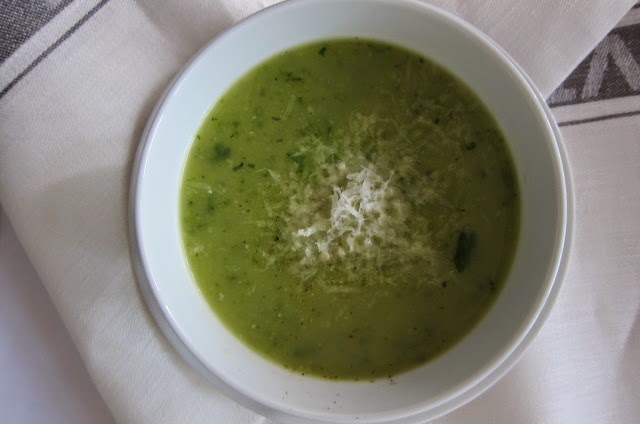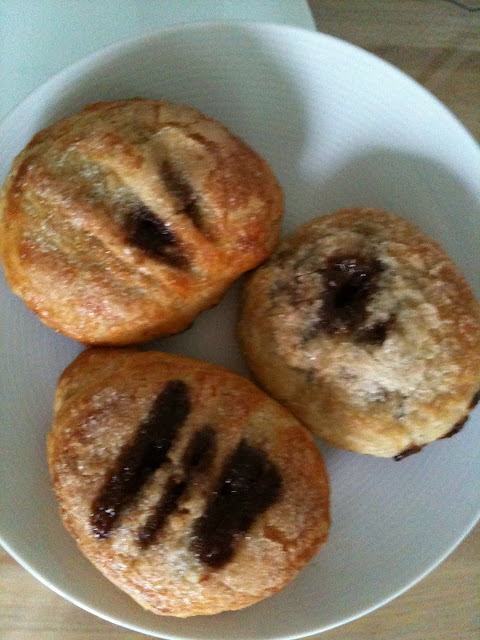 |
| Courgette plant - Striato di Napoli |
If you've grown courgettes this year you'll know what a great year it's been for this crop. If you have friends growing them you will, by now, be less and less tactfully declining yet another offering. For this reason you can never have too many courgette recipes up your sleeve. This year I've resorted to giving courgettes away by the bagful together with a copy of this brilliant recipe for a surprisingly creamy Courgette, Basil and Parmesan Soup below (with heartfelt thanks to Lindsey Bareham). If you are new to vegetable growing, courgettes are a great crop to start with. Don't plant them closer than 1 metre apart, give them a good dousing of water every couple of days if rain is sparse or non-existent, and they will romp away. Personally I have neither the patience nor the space to grow them from seed indoors so I plant the seeds straight into the ground in mid-May. They will be ready to pick from mid-July and can go on until end of September.
 |
| Courgette Soup |
This year I've grown three varieties but the yellow Soleil is by far the tastiest, taking on a lovely nutty, caramel flavour when sliced and cooked on a hot griddle. If you grow the round Italian Ronda de Nizza, as I did, keep a close eye on them as they can erupt from cricket ball (the perfect size) to football in the blink of an eye. If this happens to you, with whatever variety, you need never again think of that ghastly fallback 'stuffed marrow'. This soup recipe will accommodate the overblown monsters happily and be far more rewarding of your effort.
Courgette, Basil and Parmesan Soup (a Lindsey Bareham recipe)
(serves 4-6. Good hot or cold))
750g courgette or marrow
125g spring onions or 1 medium onion
25g butter
2 medium-sized new potatoes
1 garlic clove
Half a lemon
750ml light chicken or vegetable stock
20 basil leaves
4 tblsp freshly grated parmesan
Trim and grate the courgette. Spread in a colander and sprinkle with 1 tblsp of salt, leave to dry out. Trim and finely slice the onions. Melt the butter in a spacious pan, stir in the onions, season, cover and cook, stirring occasionally, over a medim-low heat for about 10 minutes until slippery soft.
Scrape the potatoes and chop small. Crush the garlic. Remove the zest from half the lemon. Stir potatoes, garlic and lemon zest into the soft onion, cover and cook for a couple more minutes.
If using stock cubes, dissolve in 750ml of boiling water.
Squeeze as much liquid as possible out of the grated courgette and add to the pan. Cook, uncovered, for 2-3 minutes and add the stock. Bring to the boil and cook, partially covered, for about 5 minutes until the potatoes are tender. Add the basil then blitz. Stir in the parmesan, taste and adjust the seasoning with salt, pepper and lemon.





